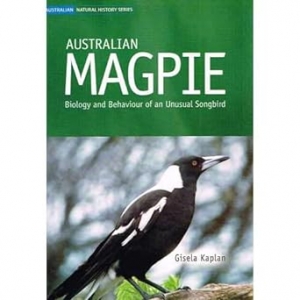CSIRO Publishing
Saskia Beudel reviews 'Australian Deserts: Ecology and landscapes' by Steve Morton
Ecologist Steve Morton’s new book opens with a telling anecdote: as a young scientist in Alice Springs, he often advised visiting film crews about promising locations for their nature documentaries. When one group returned after a week in the desert, they reported back on a single hitch in an otherwise successful trip – a lack of wind-blown sand dunes. To fix this problem they cleared spinifex off a dune, creating a large expanse of bare sand, the illusion enhanced by accommodating morning winds.
... (read more)Neil Murray reviews 'Night Parrot: Australia’s most elusive bird' by Penny Olsen
Night Parrot by Penny Olsen is more than a biography of a bird that spent most of the twentieth century successfully hiding from people. It is a historical biography of human determination and obsession, and of the ways in which this bird has acted as a catalyst for transitions between those two psychological states ...
... (read more)Ruth A. Morgan reviews 'Flooded Forest and Desert Creek' by Matthew J. Colloff
In July 2009 I toured the Murray-Darling Basin and northern Queensland with a group of American college professors to see firsthand how the waterways of these regions were faring. By this time, south-eastern Australia had been in drought for nearly a decade, reducing its rivers and creeks to mere trickles. Aboard the MV Kingfisher, we explored the wetlands of the Barmah Choke, the narrowest section of the River Murray, where thirsty River Red Gums stood starkly exposed along its banks. Years without flood, as Chris Hammer observed in The River: A Journey through the Murray–Darling Basin (2011), was changing the Barmah ‘from a wetland to a woodland’. But the drought did break, eventually: twelve months after my visit the river flooded and the inundation of the region’s floodplains brought relief to the many species, human and non-human, for whom the Murray is their lifeblood.
... (read more)Fire, more than any other thing, challenges the divide between the cultural and the natural, between being human and the non-human world. We make a pact, if not with a devil, at least with terrible danger when we use fire; and it is a pact, despite how it might seem in our urban modernity, over which we have no choice. We need fire. It doesn’t need us. If it truly had character, as it so often seems to, it would be indifferent, callous, cruel. And it is this that cooks our food and warms our toes.
... (read more)Peter Menkhorst reviews 'Boom & Bust: Bird stories for a dry country' edited by Libby Robin, Robert Heinsohn and Leo Joseph
The concept behind this book is unusual and ambitious. In twelve essays centred on charismatic birds of Australia’s inland, the authors attempt to provide a deeper understanding of the ecology of arid Australia. They also hope that their writings will provide insights and inspiration about how humans might live there in a more sustainable way. Birds were selected as the linking theme of these essays because their ecology is comparatively well known, because their mobility increases the options available for surviving in the harsh and unpredictable desert environment, and because birds, to many readers, are the most familiar group of animals.
... (read more)Peter Menkhorst reviews ‘The Complete Field Guide to Butterflies of Australia’ by Michael F. Braby
Butterflies are perhaps the most agreeable of insects: harmless, highly visible, diurnal, brightly coloured and almost whimsical in their movements. Because of these qualities, they have attracted considerable attention from naturalists and artists throughout recorded history. Since Victorian times, their diversity and natural history have been documented in great detail – more than for any other group of invertebrate animals. Butterfly collecting was a popular pastime until recent decades; many a colonial home contained a wood cabinet with neat rows of carefully pinned butterfly specimens. More recently, butterflies were the subject of the first nationwide biological atlas scheme: the Atlas of British Butterflies conducted through the 1970s by the British Biological Records Centre. This project drew upon the energy of 2000 butterfly enthusiasts across the British Isles to record the presence of species in ten-kilometre grid cells. The biological atlasing concept has subsequently been applied to other groups, particularly birds and flowering plants.
... (read more)Nick Drayson reviews ‘Australian Magpie: Biology and behaviour of an unusual songbird’ by Gisela Kaplan and ‘Kookaburra: King of the bush’ by Sarah Legge
In the old days, it was easy. The eagle was a large bird with sharp talons for gripping and a hooked beak for tearing prey; the swallow was a fast-flying bird that left our shores each winter to seek warmer climes. But since Charles Darwin, we can’t say that anymore, because the very language of such descriptions implies purpose – either will (the swallow somehow knowing, planning, its migration) or design.
... (read more)Libby Robin reviews 'Feather and Brush: Three centuries of Australian bird art' by Penny Olsen
Gilbert White, in 1789, declared that ‘the language of birds is very ancient and, like other ancient modes of speech, very elliptical: little is said, but much is meant and understood’. How then to portray the speakers of such language? How to give them meaning and understanding as well as plumage?
... (read more)







